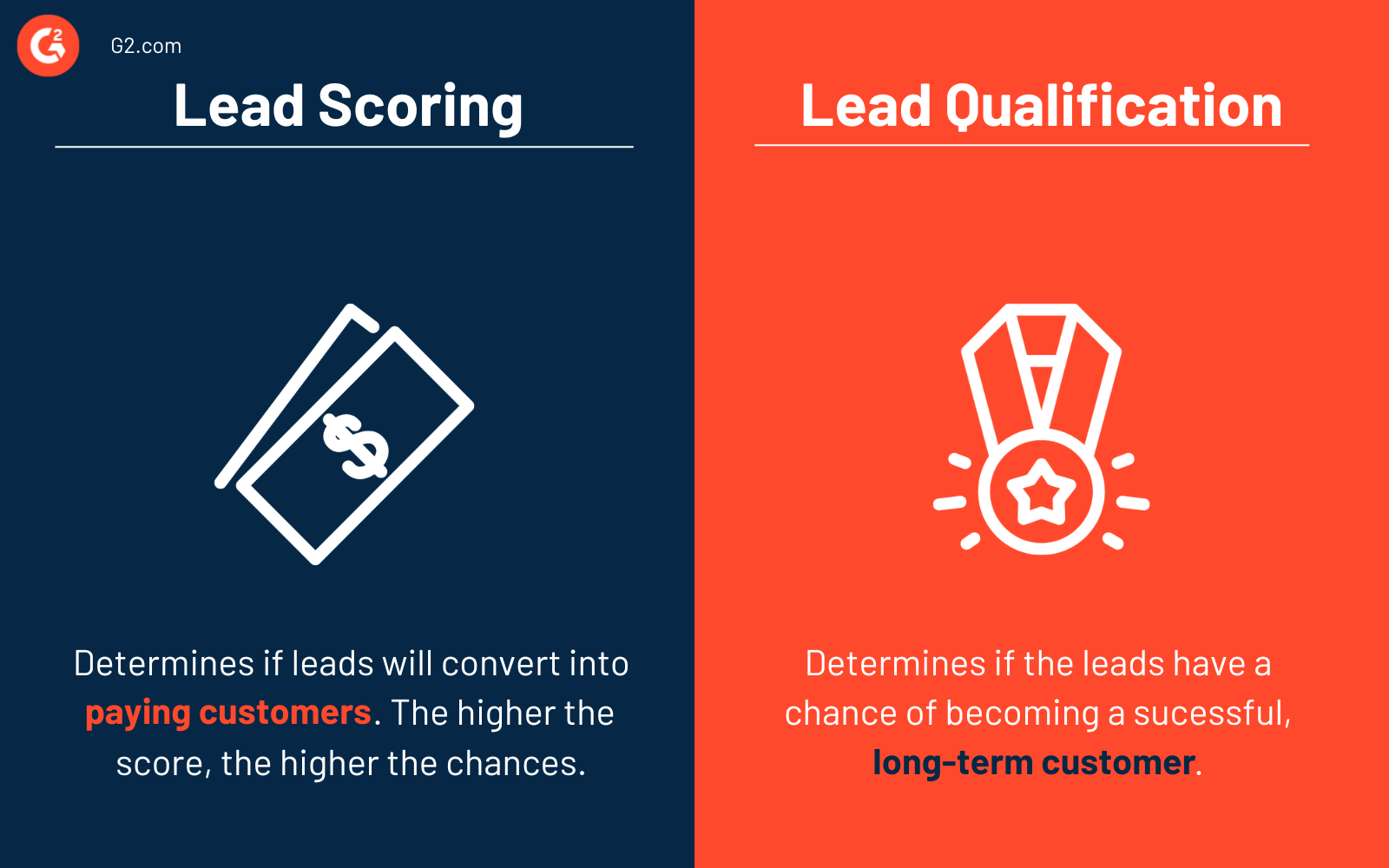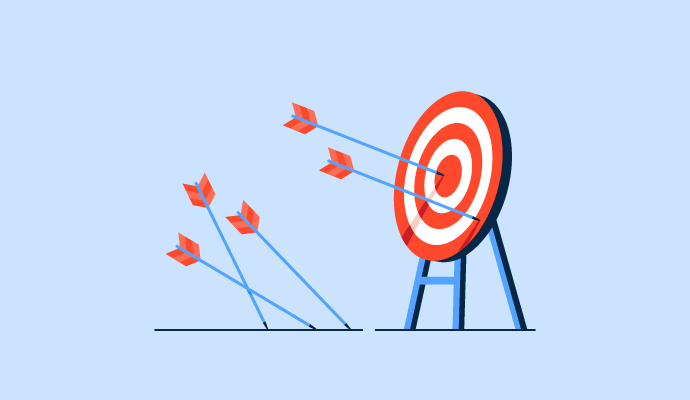What is lead scoring?
Lead scoring is the process of measuring a lead’s probability of converting into a paying customer. The score depends on their behavior across multiple touchpoints and information gathered during the lead generation process.
The lead score is typically measured on a scale of one to ten or hundred – the method varies from company to company. Many organizations use lead scoring software to assist with determining this metric.
Tracking the behavior of prospects allows businesses to identify which have transitioned to sales-qualified leads and which have not. It helps salespeople guide customers along the buying journey.
Types of lead scoring
Various attributes contribute to lead scores. These could be email subscriptions, website visits, or visits to the pricing page, but they all mainly fall under the two categories below:
- Explicit lead scoring receives data directly from the leads. It usually includes demographic and firmographic information.
- Implicit lead scoring evaluates lead behavior across multiple touchpoints, such as push notifications or logins.
Benefits of lead scoring
Lead scores help organizations rank their prospects and decide who will bring in revenue. It’s an essential tool in the B2B buying cycle. Some of the most common benefits lead scoring offers are:
- Lower marketing costs. Organizations can reduce marketing and acquisition costs by implementing good lead scoring. It helps identify and eliminate strategies that only drive low-quality leads.
- Enhanced conversion rates. Representatives who apply lead scoring to their work can nurture leads with a higher chance of converting. This shift in focus encourages salespeople to be more efficient.
- Better sales and marketing alignment. Lead scoring helps sales and marketing teams align about quality standards and how they’re calculated throughout the buyer's journey. This keeps the scoring methodology consistent across departments, empowering sales and marketing to join forces to ensure more conversions.
- Higher revenue. Lead scoring can lead to more money as companies concentrate on high-quality leads.
Operating elements of lead scoring
Sales and marketing teams have to work together to nurture clients because every potential lead is vital. Implementing tactics to organize contacts and identify ideal prospects is essential. Below are some of the common other operating elements involved in lead scoring:
- The lead score threshold is the point value that identifies a customer as sales ready.
- Negative scoring deducts points from a lead score in response to actions that suggest a lack of interest in the product or the company.
- Score degradation helps deal with leads that remain stagnant and require extra attention in terms of marketing.
- Periodic refinement occurs when teams make real-time modifications based on results to meet the target audience’s growing needs.
How to score leads
Lead scores are often based on information like behavioral data or demographics. While organizations can calculate lead scores depending on their requirements, companies often follow some standard steps to arrive at lead score calculations.
- Identify customer conversation rate. The first step is to find the lead-to-customer conversion rate, i.e., the number of leads who will become customers. Divide the number of clients acquired by the number of leads in the same period.
- Choose attributes. The attributes could be companies of a certain size, employees from a particular sector, or users with a free trial. Use lead scoring models like demographic information, online behavior, company information, social engagement, or email engagement. Communicate with the sales staff to identify which data is the most valuable or vital indicator of future sales.
- Calculate closure rate. Figure out the proportion of people for each attribute, then calculate the percentage of customers with each characteristic.
- Compare close rates. Compare close rates for each attribute with the overall close rate. This step is crucial because there might be a vast difference in the overall close rates versus the close rates for individual attributes. For example, suppose the close rate for a person requesting a free trial is four times larger than the overall close rate. In that case, the organization can award extra points to customers with that specific attribute.
Lead scoring vs. lead qualification
Some may confuse lead scoring with lead qualification, but the two have important differences.

Lead scoring is a technique used by organizations to determine how likely leads are to convert into paying customers. It involves assigning a specific point value to the leads. The higher the scores, the greater the chances of conversions.
Lead scoring helps sales and marketing teams prioritize needs. A contact’s lead score is a mix of demographic and behavioral data.
Lead qualification identifies whether a lead fits the ideal customer profile (ICP). It determines if the leads have a high chance of becoming a customer and, if so, whether they have a high chance of being a successful long-term customer.
It cuts through the clutter of leads in databases that have made their way through somehow. For example, students actively consuming content from a website need not necessarily qualify as a lead since they don’t submit consultation requests from the page.
Learn more about how conversational intelligence software uses analytics to score and qualify leads in real time.

Sagar Joshi
Sagar Joshi is a former content marketing specialist at G2 in India. He is an engineer with a keen interest in data analytics and cybersecurity. He writes about topics related to them. You can find him reading books, learning a new language, or playing pool in his free time.



















